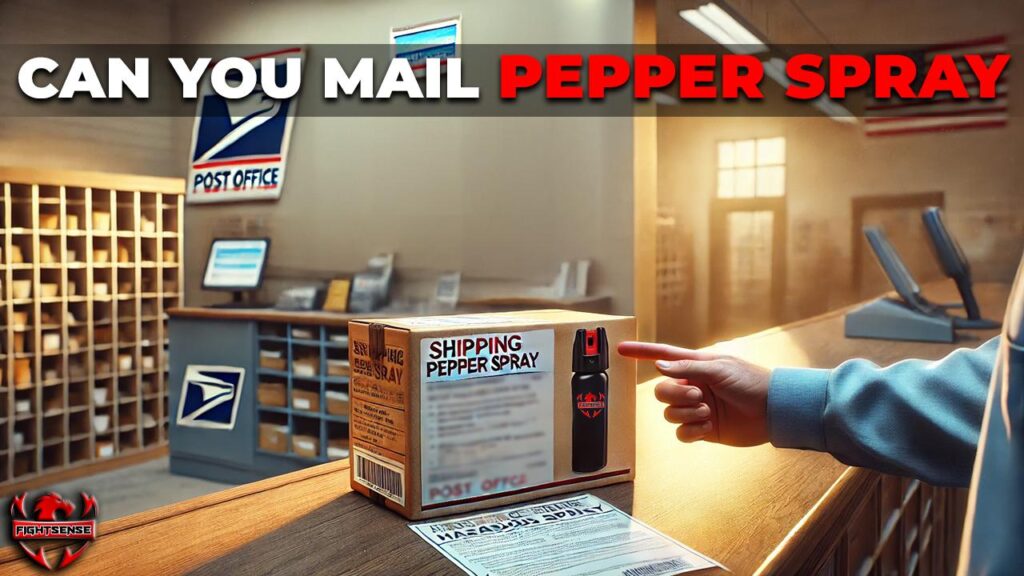Table of Contents
- Understanding Federal Regulations on Mailing Pepper Spray
- State-by-State Legal Variations and Restrictions
- Packaging and Labeling Requirements for Shipping Pepper Spray
- Best Practices for Compliant and Safe Mailing Across State Lines
- Wrapping Up
Understanding Federal Regulations on Mailing Pepper Spray
Navigating the complexities of federal regulations around mailing pepper spray requires a clear understanding of the Restricted Items list upheld by agencies such as the U.S. Postal Service (USPS) and the Transportation Security Administration (TSA). Pepper spray is classified as a hazardous material, which subjects it to strict shipping restrictions primarily due to its potential to cause harm if misused during transit. When shipping across state lines, senders must ensure the product complies with size limitations, labeling requirements, and packaging protocols to avoid penalties or shipment denial. Additionally, the mixture concentration and container size are often capped to minimize risks, reflecting the federal commitment to public safety and security.
It’s important to note that, beyond federal guidelines, state laws regulating pepper spray possession and transport can differ significantly. Some states prohibit mailing it entirely, while others allow it with specific conditions such as requiring customers to be 18 or older or prohibiting the shipment to certain locations. When preparing a shipment, consider the following:
- Proper labeling: Clearly mark packages to indicate the presence of hazardous materials.
- Carrier restrictions: Verify that the chosen courier service permits shipping pepper spray and complies with all applicable regulations.
- Documentation: Include all necessary shipping declarations and any required permits.
State-by-State Legal Variations and Restrictions
Navigating the patchwork of regulations governing the shipment of pepper spray across state lines can be daunting. Each state enforces its own laws regarding the degree of allowed possession, permissible concentration, and even the methods of delivery. For instance, some states like New York and California impose strict restrictions on the size and chemical make-up of pepper spray canisters, while others such as Texas and Florida allow more liberal quantities and concentrations. Furthermore, certain states prohibit mailing pepper spray entirely, considering it a prohibited hazardous material. It’s essential for senders to know not only the forwarding state’s rules but also those of the destination to avoid inadvertent legal violations.
Key considerations often include:
- Legal status of pepper spray in sender and recipient states
- Restrictions on container size and chemical composition
- Designation of pepper spray as hazardous material by USPS or private couriers
- Age limits and licensing requirements for possession
Packaging and Labeling Requirements for Shipping Pepper Spray
When mailing pepper spray across state lines, it’s crucial to adhere strictly to all packaging and labeling guidelines to ensure safety and legal compliance. Containers used must be sturdy and secure enough to withstand transit without leaking or accidental discharge. Typically, the container should be sealed in a tamper-evident packaging, such as a sealed plastic bag, and cushioned with sufficient padding to prevent damage. Use of a rigid outer box is highly recommended to maintain the integrity of the contents during shipment.
Labeling plays an equally important role:
- Hazardous Material Warning: Clearly mark the package with “Aerosol” or “Pepper Spray” along with any other required hazardous material warnings as mandated by postal and shipping carriers.
- Fire Hazard Notices: Since many pepper sprays contain flammable propellants, labels must indicate potential fire risks.
- Recipient Information: Accurate and legible recipient details must be displayed to avoid delivery issues and comply with carrier regulations.
Failing to meet these requirements can result in your shipment being delayed, returned, or even confiscated by postal officials. Prioritize compliance to ensure your delivery reaches its destination without complications.
Best Practices for Compliant and Safe Mailing Across State Lines
When mailing pepper spray across state lines, it is crucial to fully understand and comply with both federal regulations and individual state laws. The U.S. Postal Service (USPS) permits mailing of pepper spray only if the container is labeled as a self-defense spray and does not exceed 4 fluid ounces. Additionally, the packaging must be secured to prevent accidental discharge during transport. Beyond USPS guidelines, you must research the destination state’s restrictions, as some states prohibit possession or shipment of pepper spray entirely or have limits on the allowed concentration and volume. Ensuring compliance upfront prevents costly legal repercussions and delivery refusals.
Implement these best practices for safe and lawful mailing:
- Verify State Laws: Always check state-specific legislation before shipping, as some states require permits or ban pepper spray altogether.
- Use Proper Labeling: Clearly label the package as containing a non-flammable, self-defense spray to satisfy carrier regulations.
- Secure Packaging: Ensure the pepper spray container is sealed and cushioned to prevent accidental activation.
- Choose Approved Carriers: Confirm your chosen shipping service allows delivery of pepper spray and adheres to legal restrictions.
- Keep Documentation: Retain copies of shipping receipts, tracking info, and any permits to demonstrate compliance if questioned.
Wrapping Up
In conclusion, mailing pepper spray across state lines is a topic that demands careful attention to both federal regulations and individual state laws. While pepper spray can be a valuable tool for personal safety, understanding the legal nuances involved in shipping it is crucial to avoid potential penalties or confiscation. Always verify the specific requirements and restrictions of the destination state, comply with postal service guidelines, and consider consulting legal expertise if you’re uncertain. Staying informed ensures that you can responsibly and safely transport self-defense products without running afoul of the law. Stay safe and informed!Check Our Other Blogs
- StunGun – Your Trusted Source for Stun Guns, Laws, and Self-Defense Tips
- PepperSprayLaws – Your Trusted Resource for Pepper Spray Information
- StunGunLaws – Your Trusted Guide to Stun Gun Legality and Safety




